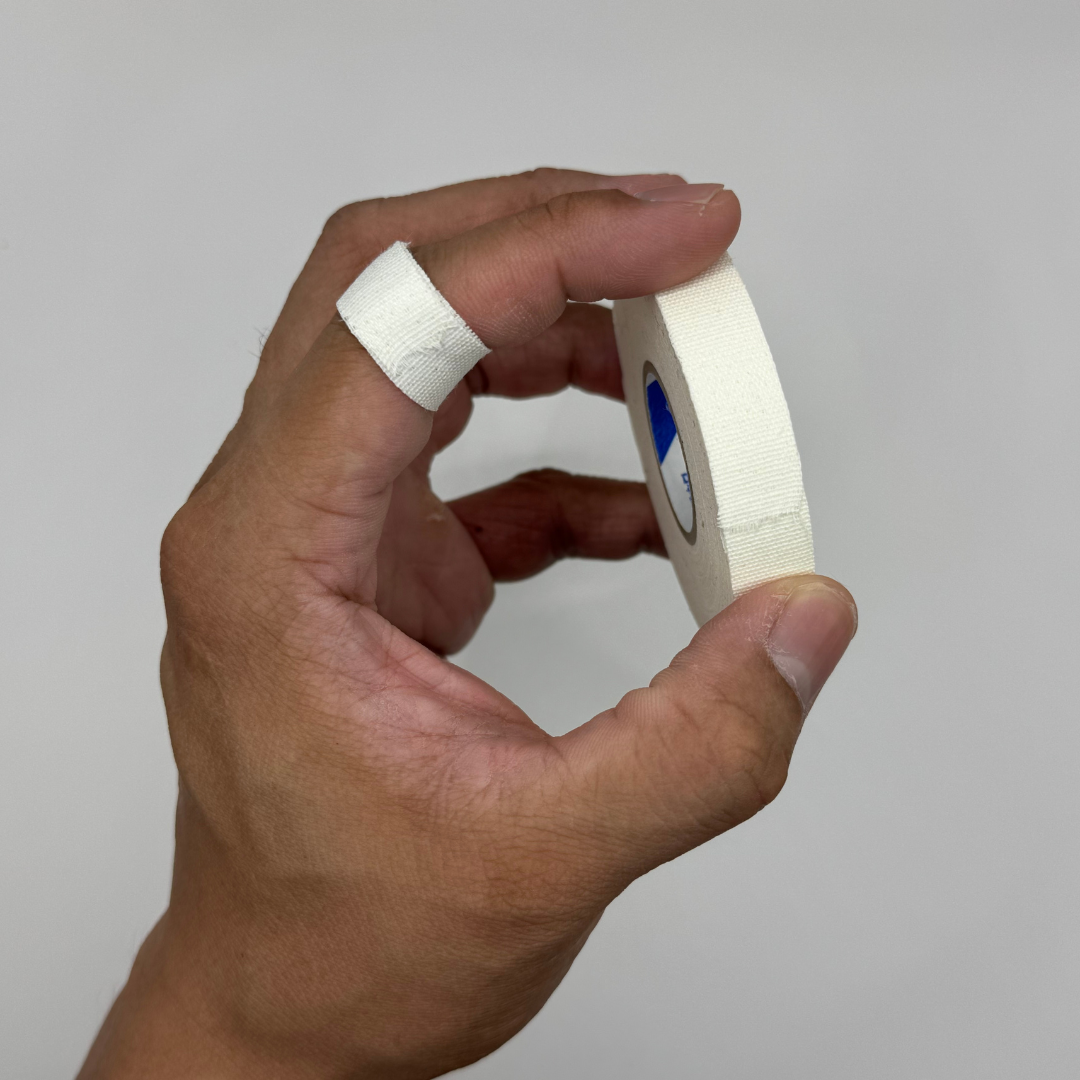
Your Ultimate Guide to Best Self-Taping Method for Fingers in BJJ
Share
Why Self-Taping Matters for BJJ Athletes:
In Brazilian Jiu-Jitsu (BJJ), your joints are constantly under stress, whether you're training, competing, or recovering. Proper taping can help prevent injuries, support weak or injured joints, and improve overall performance. Using Nichiban Battlewin tapes ensures that you’re using the best products to stabilize your joints without restricting movement.
Step-by-Step Self-Taping Instructions for Finger Joint:
Finger injuries are common in grappling sports. Taping the fingers helps stabilize the joints and prevent further damage.

- Step 1 - Anchor: Stretch your finger out and apply tape around the joint at two points to protect it.

- Step 2 - Support: Stretch the finger as much as you can, then slightly return it to its natural position. Apply support tape from the anchor on the fingertip to the anchor at the base of the finger.

- Step 3 - X-Support: Starting from the fingertip anchor, apply two support tapes that cross over the joint, from the fingertip to the base of the finger.

- Step 4 - Secure: To secure the support tapes, wrap the anchor tape (from Step 1) around the joint once more, completing the taping process.
Additional Tips for Effective Self-Taping:
- Pre-Taping Care (U70F): If you have sensitive skin or hair, consider using Battlewin U70F as a pre-taping layer. This helps protect your skin and prevent discomfort during the taping process.
- Tape Placement: Always tape from the base of the joint upwards to ensure proper support.
- Adjust for Comfort: Ensure the tape is firm but not so tight that it cuts off circulation.
- Frequency: You can tape these joints before every training session or competition for added support.
- After Care: Always remove the tape gently and let your skin breathe between uses to avoid irritation.
Conclusion:
Taping your finger, an easy yet effective way to protect your joints and reduce the risk of injury in BJJ. With Nichiban’s Battlewin tapes (C12F), you’ll have the best support while maintaining the flexibility needed for your movements.
Keep this guide as a reference for all your self-taping needs, and feel free to revisit the techniques whenever you need to refresh your skills!
